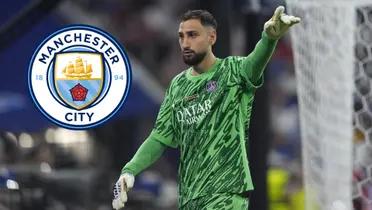Unprecedented format: the radical change the FIFA is preparing for the 2030 World Cup
A new era in World Cup history: FIFA's bold plan for the 2030 tournament.
By Ramiro Diaz

According to a report from the renowned The New York Times, FIFA is considering a radical change to the format of the 2030 World Cup, which will be held across three continents: Europe, Africa, and South America. While the 2026 tournament will be the first to feature 48 teams, the organisation is contemplating increasing the number of participating teams to 64 for the 2030 competition.
Why 64 teams? A big change
The plan to increase the number of teams in the 2030 World Cup to 64 represents a significant shift in the tournament's history. Since FIFA adopted the 32-team format, the 2026 edition will be the first to expand to 48. However, the vision for 2030 seems even more ambitious, taking the competition to an entirely new level, with a greater number of teams competing for the world title.
This change would allow more countries the opportunity to participate in the world’s most prestigious football tournament, generating increased interest and expanding the global reach of the World Cup. However, it also brings new logistical and organisational challenges for the host nations, which would need to manage the infrastructure required to accommodate the larger number of teams and matches.
A 64-team World Cup: More excitement or complications?
The potential expansion to 64 teams would not only increase the number of nations but also alter the structure of the tournament. Currently, the group stage consists of 8 groups of 4 teams, but with 64 teams, FIFA would have to rethink the distribution of groups and the qualification methods to maintain competitiveness and excitement.
Moreover, the tournament's schedule would be impacted, as additional dates would need to be added to accommodate the extra matches. This could raise concerns about player fatigue and the logistics of managing more matches in multiple stadiums, especially if the World Cup is hosted by several countries simultaneously.
What would this mean for world football?
This potential change is part of an ongoing effort to globalise football and provide more visibility for less traditional teams. By increasing the number of teams, FIFA seeks to offer a more inclusive and diverse platform, allowing more nations the opportunity to compete at the highest level.
While the idea of a 64-team World Cup generates excitement, it also invites reflection on whether this format would truly benefit the spectacle or if it could dilute the quality of the matches. Nevertheless, FIFA seems determined to take a bold step, which could mark the beginning of a new era in the history of the World Cup.
More news

THE GANG IS HERE! First Argentine Stars Arrive in Buenos Aires for Final Qualifier Push!
01/09/2025

THE LAST DANCE! Lionel Messi Confirms His Final World Cup Qualifier in Argentina!
29/08/2025

TRANSFER COLLAPSES! Julio Enciso Fails Medical Exams, Returns to Brighton!
27/08/2025

Vini doesn't feel entirely comfortable at Real Madrid anymore and is seeking a future at another club
26/08/2025

HERE WE GO! Piero Hincapié Says YES to Arsenal, Club Prepares Final Bid for Leverkusen Star!
26/08/2025

THE REAL MADRID SHOWDOWN: Nico Paz's Future Sparks a Bidding War Across Europe!
25/08/2025

SOUTH AMERICAN SHAME: Independiente vs. U. de Chile Match Canceled After Horrific Incidents!
21/08/2025

Rodrygo Benched by Xabi Alonso: The End of an Era at Real Madrid?
20/08/2025

PARIS IN PARIS! The New Superclub, Paris FC, Rises to Threaten PSG-Marseille Rivalry!
20/08/2025

PSG’s €850M Budget is 30x Larger Than the Smallest in Ligue 1!
19/08/2025

THE DEBUTS ARE HERE! Estupiñán & Modrić Step Onto the San Siro Stage!
18/08/2025

CONTROVERSY IGNITES! Barcelona Opens Season with a Contested 2-0 Victory Over Mallorca!
18/08/2025

SCANDAL ESCALATES: Donnarumma's Harsh Letter Responds to Luis Enrique's Super Cup Snub!
15/08/2025

Franco Mastantuono: A New Number 30 for Real Madrid with a Nod to the Past
14/08/2025

HISTORY MADE! PSG Wins First-Ever Super Cup Title in Thrilling Penalty Shootout!
14/08/2025

Mastantuono Arrives at Valdebebas for Real Madrid Presentation
13/08/2025

ON AND OFF THE PITCH: Is Nicki Nicole the New WAG of Barcelona's Lamine Yamal?
13/08/2025

Donnarumma Bids Farewell to Paris Saint-Germain at the Peak of His Career
13/08/2025



